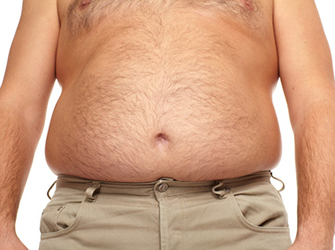It just takes some consistency.
Exercising burns calories so if you exercise enough, or reduce calories, you will lose weight 100 percent of the time, and regardless of claims about ultraprocessed foods or needing a shot. Even if you don't lose weight you're still better off. The research team grew fat tissue in the lab from cells collected from both exercisers and nonexercisers, and found that cells from the exercisers developed into a tissue that even stored fat more effectively.

He's no Brad Pitt but he's still healthy. Image: Medical University of Vienna.
It's challenging to study the effects of exercise on fat because of cost - and people who take surveys often recall wrong, even if they mean well. To get past that the team compared two groups of adults with obesity: 16 people who reported exercising at least four times a week for at least two years—the average was 11 years; and 16 people who'd never exercised regularly but matched in other things like body fat mass, weight and sex. The team took samples of belly fat tissue just under the skin from both groups.
They found that the exercisers had distinct structural and biological characteristics in their fat tissue that increased the capacity to store fat there. The nonexercisers did not have those characteristics. Specifically, the exercisers had more blood vessels, mitochondria and beneficial proteins, and less of a type of collagen that can interfere with metabolism and fewer cells that cause inflammation.
This matters because the healthiest place to store fat is the fat tissue just under the skin where the samples were taken, called subcutaneous adipose tissue. Increasing the capacity to store fat here through exercise reduces the need to store fat in unhealthy places, like in the fat tissue around the organs or in the organs themselves.




Comments